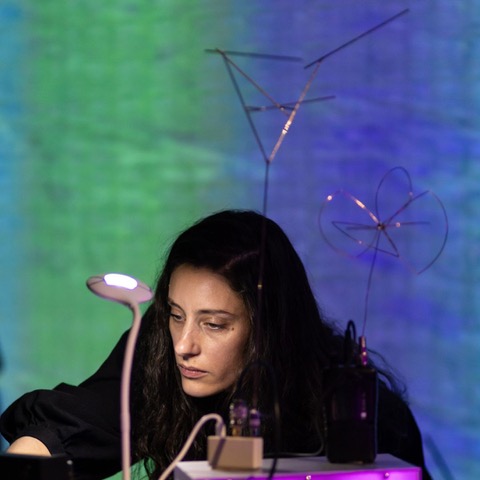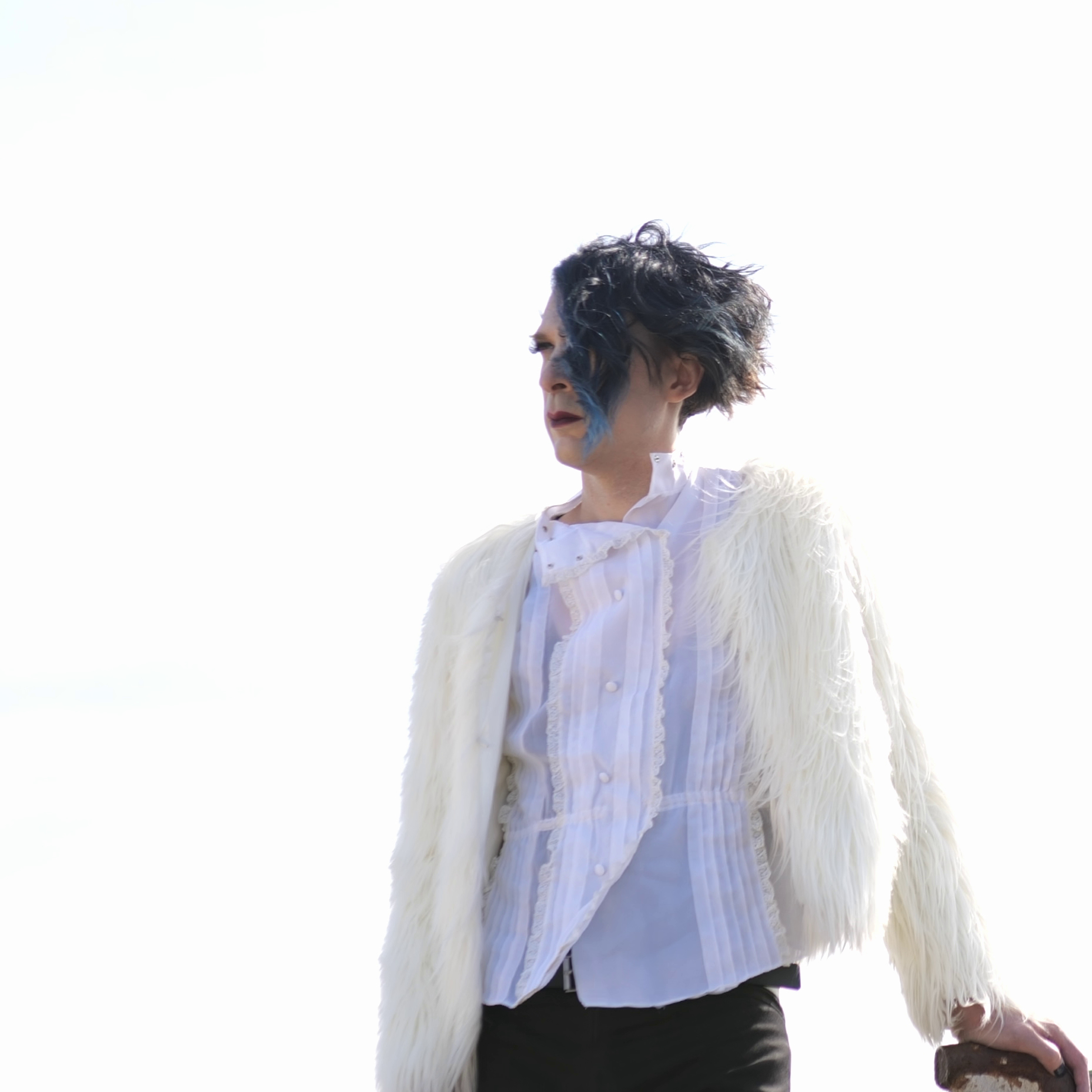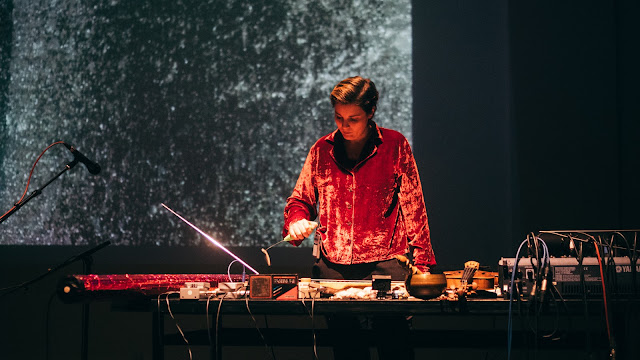October 17, 2024
Day 2 -
9pm

1345 Ave. Lalonde, Montréal, QC H2L 5A9
Get your tickets
Florence-Delphine Roux (ca)
Florence-Delphine Roux is a digital and sound artist originally from Quebec City and based in Tiohtà:ke/Montreal. Her work explores the intersection of art, science, and technology, with a focus on the medium of radio. Her creations take the form of listening experiences, immersive sound installations, performances, video art, and radio works.
Driven by a sound-based practice, largely sourced from material stored from outdoor recordings, Florence-Delphine Roux's work is significantly based on the possibility of playing with textures that are not perceptible to the eye, particularly electromagnetic fields, thus contributing to a disruption of reality.
With a desire to develop a practice of fiction, the artist also invests in the field of radio production, with the ambition of creating a « cinema for the ear».
Text by Frédéric Bonnet
Website | Linktree
Program
Cime (2024) 11’00
Cime proposes a disruptive ascent into the soundscape of one of Quebec's most mysterious peaks, Mont-Saint-Hilaire. Embedded in the collective imagination of the residents of Montérégie, this mountain has inspired numerous legends, with myths that endure, fueled by new beliefs related to the paranormal. The artist will navigate between capturing ambisonic soundscapes, natural very low-frequency radio signals, and analog and granular synthesis.
This work draws from phonographic archives created as part of a performative research project on extrasensory literacy and disruptive listening of the Gault Nature Reserve.

Credit : Alexis Bellavanc
Shane Turner (ca)
Shane Turner is a composer who is drawn to the mutable boundaries and properties of acousmatic music as a way of expressing experiences omitted by essentialism. Their music encompasses solo fixed works, audio for installations, popular forms in soundtracks, as well as group performances with live electronics and synthesis. Shane's works have been released on the Panospria Label under NoType, by the CEC, and performed at various festivals, including Mutek. They studied electroacoustic music composition at Concordia University.
︎ | ︎
Program
rumors, approximated (2024) 10’00
rumors, approximated is an exploration of synthesis, vocals (Simone Pitot/Delorca) and a model combining the two.
Charting sensory discord: the constant dissolution and resynthesis of the senses experienced while moving between conflicting sensory regimes over the course of a particularly dynamic year. Complete information ecosystems, fed by private algorithms that reflected and molded their permissible sensoriums, ran headlong into collision while cultural schisms arose over the basis of old and nascent forms of expression.

Credit : Roxane De Konink
Manja Ristić (hr)
Manja Ristić, born in Belgrade in 1979, is a violinist, sound artist, published poet, curator, and researcher. She graduated from the Belgrade Academy of Music (2001), then awarded at the Royal College of Music, London, with PGDip Solo/Ensemble Recitalist (2004). As a classical solo and chamber musician, as well as a composer and an improv musician She has performed all across Europe and in the US, involving collaborations with established conductors, performers, multimedia artists, poets, and theatre/film directors. Ristić’s sound-related research besides contemporary performance in the field of instrumental electro–acoustics, is focused on interdisciplinary approaches to sound and field recording as well as experimental radio arts.
The winner of several distinctive awards for solo and chamber classical music, laureate of the Academy Charles Cros Sélection Musiques Expérimentales 2024, holds an honorable mention from the Phonurgia Nova Awards, and a Golden Award for the extended media from the Association of Fine Artists of Serbia. She is a founding member of CENSE – Central European Network for Sonic Ecologies.
Website | ︎ | ︎
Program
ghosts (2024) 20’
How do we approach the landscape of severe devastation and a dense history of warfare?
In the work ghosts I am using obsolete instruments – a modular synthesizer EMS Synthi 100, a discarded wheelchair wheel salvaged from the Adriatic Sea, and the piano fallen in disuse which belonged to the Austrian conceptualist, filmmaker, improviser, photographer, environmentalist, and writer – Karl Katzinger aka John Tylo (October 1953 – April 2021).
Next to these elements of the past and their voices rediscovered, I am incorporating live processing of hydrophone and field recordings, found objects, and electromagnetic fields, from several locations, appropriating them through the discourse of critical tourism and a culture of memory – more specifically through listening to the inherent memories of environmental devastation and warfare – in the South Adriatic, on the Atlantic coast, and the Czech-Austrian borderlands former Iron Curtain belt, including region of former Mauthausen–Gusen working camps.

Credit : Milica Cvetković